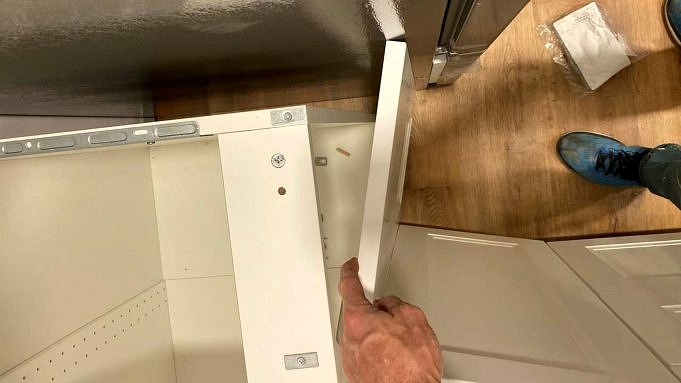How To Install Cabinet Filler Strips – A Step-by-Step Guide
Share It
Cabinetry is one of the most difficult parts of kitchen DIY construction. New homeowners often get confused about it. This dilemma includes installing cabinet filler strips, often leading to revolting gaps and malfunctioning corner doors. If you dont want to be inconvenienced with unsightly mishaps, take a look at this brief guide put together by our resident woodworkers.
Using Cabinet Filler Strips
If you inspect these cabinet fillers, its a no-brainer that these tools are wood strips meant to fill unsightly cabinet gaps after the installation. You may not know, but these wooden materials are typically used to hide spaces in L-shaped cabinet designs. It can be installed in many different ways, so let’s take a look at our expert advice and steps.
Tools And Materials You Will Need
Not all filler strips could fit your cabinet layout in a snap, which is why youll be needing some tools and materials to complete this DIY task. Let’s begin with the obvious: the power tools.
You may think that its too small of a task for such big equipment, but our resident DIY beg to differ. Having a miter saw and a table saw at your disposal can make things a lot easier. A belt sander can be very useful for wood sanding.
Remember to add a scribing and clamping tool to your tool list. You will be able to use 3/41 cm drill bits as well as trim head cabinet screws.
Installing Cabinet Filler Strips Against A Wall
If youre planning to install cabinet filler strips against the wall during yourkitchen cabinet restoration project, you should first measure the space between the subjects in question. This should be done on both the top and bottom of your cabinet. For reference purposes, our DIY team suggests measuring the entire cabinet.
We recommend that you test your table and miter saws before you start to use them. This will help you take extra safety precautions. Once thats all done, slice the filler strip in the same size as the cabinet. Next, use your table saw to cut strips just a little bit wider than the largest measurement you did earlier.
And then, its time to clamp the filler into the cabinet with a claw and place it against the wall next to it. After removing it, get your belt sander in action and shape it to the contour of the wall. Dont forget to place the wall side at a negative angle for easier installation later on.
Next, check if the cut-down wood matches the gap in your cabinet. Give it a squeeze to check if it fits. The belt sander can help if it doesn’t. After confirming its fit, clamp it back and drill pilot holes into the cabinet and filler strips.
Our woodworkers don’t recommend using drywall screws. For filling the cabinet boxes with fillers, use standard cabinet screws. If the length of the wooden strips is less than 3 inches, silicone or glue can be used.
Installing Cabinet Filler Strips Between Cabinets
For kitchen layouts with L-shaped cabinets, youll need to install these strips between the cabinet boxes rather than the walls. Unlike the other construction, you wont be needing to scribe or sand strips down because the cabinet faces are straight.
Simply cut the material to the same height as the cabinets, and then measure the distance to the correct angle. Remember that you will need at least three inches of filler for each corner. We advise keeping one filler with at least -inch additional width.
Join the cabinet box to the filler using screws and L-brackets Apply glue to join the edges to the cabinet sides. If you are unsure about the weight, you can install backer boards.
Related pages:



